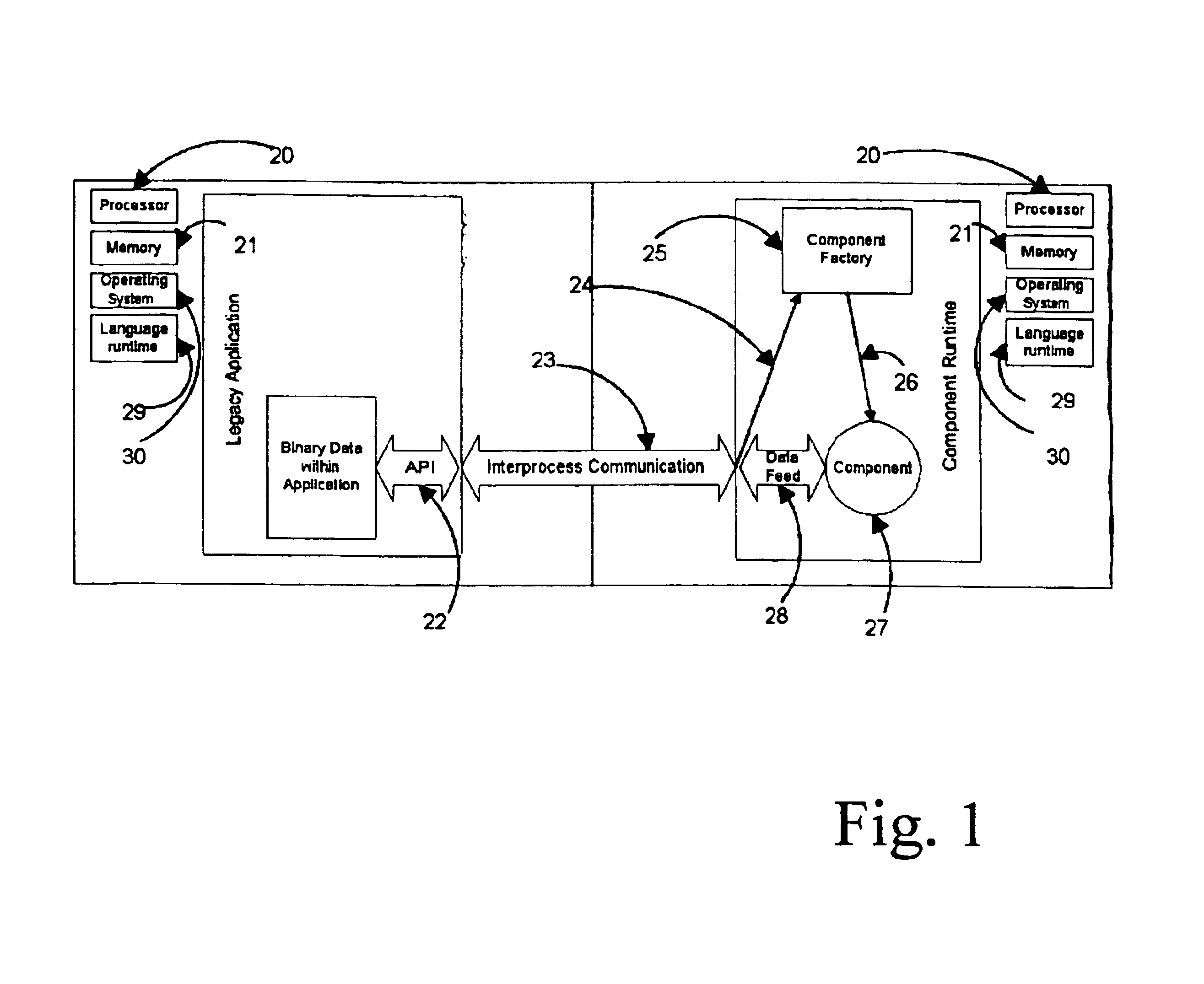Method of accessing data and logic on existing systems through dynamic construction of software components
a software component and dynamic construction technology, applied in the direction of program control, multi-programming arrangements, instruments, etc., can solve the problems of inherently cost-prohibitive to recreate business applications, inability to facilitate web transactions from existing procedural code bases, and inability to adapt to network-based programming. to achieve the effect of facilitating the reuse of existing procedural cod
- Summary
- Abstract
- Description
- Claims
- Application Information
AI Technical Summary
Benefits of technology
Problems solved by technology
Method used
Image
Examples
Embodiment Construction
[0032]As described below, the present invention will be carried out on a single computer or by one or more computers in a computer network. Referring to FIG. 12, the computer on which the workbench framework is hosted contains a processor 31, memory 33 and an operating system 32. Thus, for example, the computer used in the present invention is a personal computer or workstation that is running an Intel or RISC processor running an operating system such as Microsoft Windows NT, IBM OS / 2, IBM AIX or Sun Microsystems Solaris. The workbench framework (“workbench”) 37, one of three frameworks, utilizes existing source record layout definitions 35 as represented by a human readable textual description of a record in the source code of a computer language. This is stored on a persistent medium such as a hard disk drive and manipulated via a text editor that is not part of the present invention. An existing COBOL copybook, an example of which is shown in FIG. 3, or a PL / I record definition ...
PUM
 Login to View More
Login to View More Abstract
Description
Claims
Application Information
 Login to View More
Login to View More - R&D
- Intellectual Property
- Life Sciences
- Materials
- Tech Scout
- Unparalleled Data Quality
- Higher Quality Content
- 60% Fewer Hallucinations
Browse by: Latest US Patents, China's latest patents, Technical Efficacy Thesaurus, Application Domain, Technology Topic, Popular Technical Reports.
© 2025 PatSnap. All rights reserved.Legal|Privacy policy|Modern Slavery Act Transparency Statement|Sitemap|About US| Contact US: help@patsnap.com



